I met up with Steinunn Marta Önnudóttir and Hildigunnur Birgisdóttir, Steinunn is the founder of Icelandic gallery Harbinger. Hildigunnur has been an artistic advisor for the gallery ever since it started and she’s the one in charge of the gallery’s summer program this year.
What made you start Harbinger? Was there anything in particular that you found interesting about the gallery world?
Steinunn Marta: I had been in Iceland for two years after graduating from school in Amsterdam and I hadn’t connected properly to the Icelandic art scene. Art scenes can be so local. Therefore Harbinger became a medium for me to have to take a closer look and discover something interesting.
How’s it going being a gallerist and an artist at the same time? Do you have a studio, or do you spend most of your time on Harbinger? What’s a regular day like?
Steinunn Marta: I haven’t found a balance in between the two, I have a studio, but I’m also working somewhere else. But there is a lot of time that goes into communication, to keep the space going. I would like to try to keep these things a bit separate, where I’d spend three days a week on the gallery, but it hasn’t turned out that way so far.
Are there any focal points within the gallery, any guidelines?
Steinunn Marta: It’s all based on trial and error. I got Bjarki Bragason to exhibit for our opening of the space, without knowing him at all, but I had seen him during an interview on tv and found what he was doing interesting. He and Hildigunnur have been a great help. They know everything so well, because they’re teachers and have been working a long time. Hildigunnur also worked for i8 gallery and got to know the gallery world there. What I search for are artists that do their work with conviction and have a strong vision and/or a strong aesthetic sensibility, and I think that’s something you sense and keep as a guideline.
Do you curate yourself or do the artists sort of get to do whatever they like? Do the ideas have to be fully ready when they come to you or do you help shape them with the artists in any way?
Steinunn Marta: It’s very different from one person to another wether they choose to involve me in their process. I like being a participant, but some artists are very used to working independently. Others have a need to discuss what they’re doing and think things over and then I try to fulfil that need. But I don’t consider myself as a curator per se.
How much can one distance their own ideas and aesthetics from the work you put up in the gallery when you’re an artist as well? Do you get influenced by those that exhibit at the gallery or do you manage to distance yourself completely? Do you think you might have a certain advantage as an artist working within the gallery scene?
Steinunn Marta: The artists that exhibit are of course very different and I don’t get influenced by everyone. But there are some that I want to exhibit, because I connect with what they’re doing and I find myself in a similar place as them. The gallery also gets applications and if I think they sound well then it can be interesting to go for it, even though I may not have a personal connection to the works.
Hildigunnur: I’ve been encouraging you to only exhibit what you like. To find the passion in what you do there needs to be a certain amount of magic between you and the one who’s exhibiting.

Photo by Steinunn Marta Önnudóttir at Harbinger. Artwork by Þór Sigurþórsson.
What’s your perception of the art world in Iceland and how do you find it to be different from other places, for example in Amsterdam where you studied? What made you want to create Harbinger here and not there? Is there anything you think that the Icelandic art scene could learn from the Dutch or perhaps vice versa?
Steinunn Marta: My experience was that in Iceland it was more of a closed circle of people, where people have a good sense of the art scene and are not really open to surprises. Meanwhile in the Netherlands people are more open to the unknown, because you just assume you don’t know everyone. It’s easier to get to know people there. But Icelanders can be a little suspicious. Hildigunnur: And sarcastic, where it’s quite ambiguous what you might mean by your art. But I think the new generations are changing that and I’m really pleased.
Do you have any favourite galleries, abroad for example, that you see as an inspiration for Harbinger? What’s your favourite city to visit?
Steinunn Marta: I didn’t have any silly ideas about creating something like the big galleries in Amsterdam. Harbinger didn’t really go by any example, but sort of just grew out of itself and was based on finding a space with possibilities.
What about favourite galleries, anything comes to mind?
Hildigunnur: What I find interesting when I visit new places is how small and accessible the scene in each place really is. I went to Miami, Florida, not during Basel, but on my own and I had all these pre conceptualised ideas about that everyone would be making these giant plastic-sculptures for Art Basel Miami and the sun would be shining and that everyone would be flushed with cash. Then I got to know people my age and it surprised me how experimental the scene was and most of the people there could have just as well belonged to my own group of friends in Iceland. Most of them ran very unconventional galleries, temporary ones and even these sort of nomad galleries, including a walking gallery and the grass root scene was vibrant. Most of us seem to have our minds in the right place, putting what’s contemporary first.
What have been Harbinger’s greatest challenges so far and how have you managed to work them out?
Steinunn Marta: Good question, it’s really hard to get any connection going with the media. I feel there’s a big difference depending on who’s exhibiting each time wether or not they get any press. The better known the individual is, the easier it is to get the coverage. Which is a bit sad because then the coverage keeps revolving around the same people.
How do you see yourself and Harbinger in five years?
Steinunn: I don’t think Harbinger will still be going, if I’m realistic. Maybe if we got more collaborators I could envision the gallery existing in five years. If we would start selling more and could sustain ourselves, or if we got grants from the city to help out with rent, that would be extremely positive in my opinion.
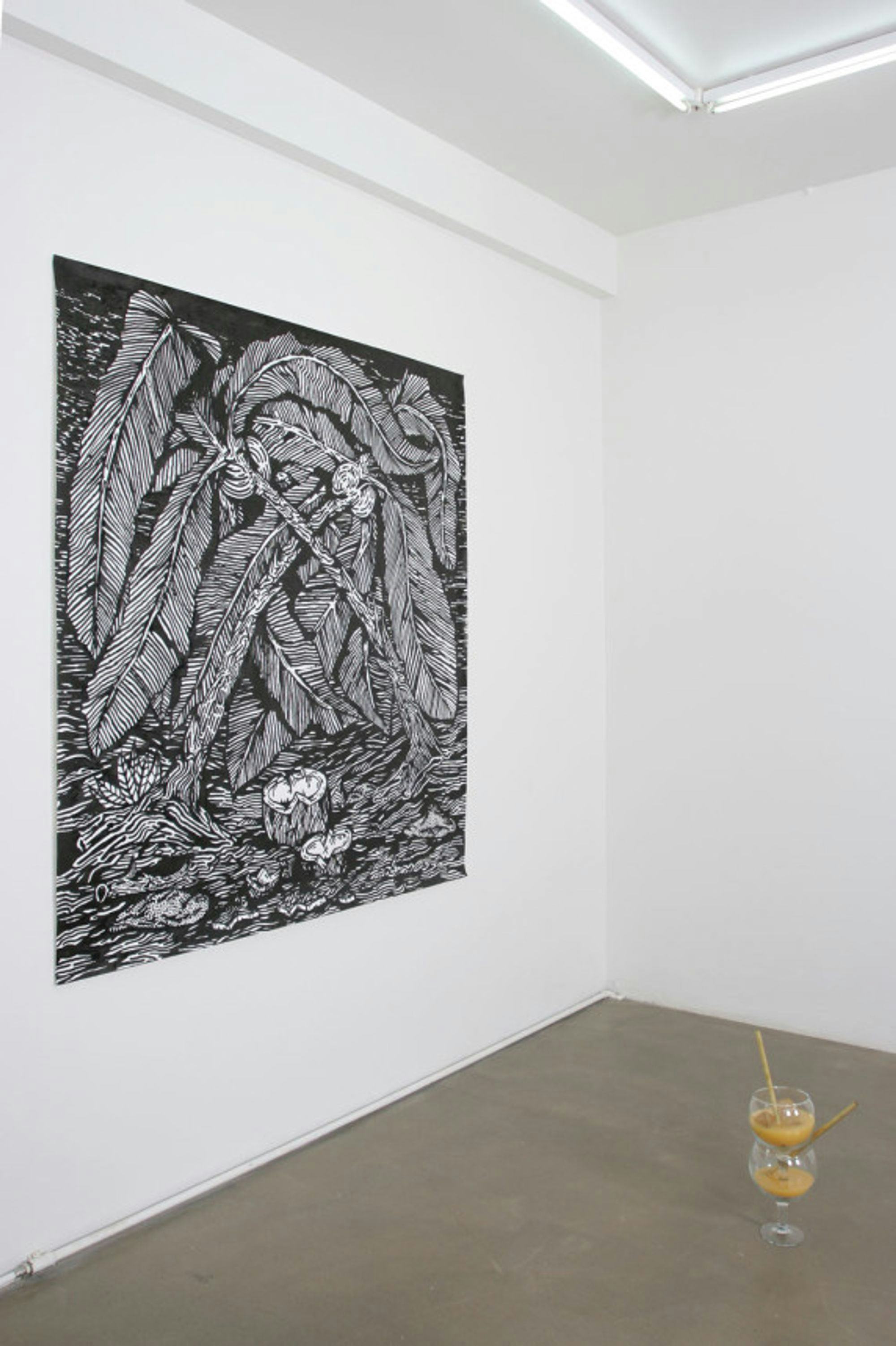
Photo by Steinunn Marta Önnudóttir at Harbinger. Artwork by Arnar Ásgeirsson & Heiðar Kári Rannversson.
What I notice at first glance at your work is that they consist of everyday objects that are put into a new perspective. Where does the material come from?
Hildigunnur: I work a lot with ideas and I think it’s important that they come across through the work. The idea gives meaning to the material, but the material can also be a source in some way and I’m a big collector. I like to collect things that have lost their purpose and I believe in justice for each and every object and that all things have a right to themselves within their context and that they have something to tell us. I’m always wondering about the narcissistic human and I like to work with man made stuff, that come to be as a result of man’s actions. Man has created most of the stuff I work with, I don’t work with natural relics or anything like that. They’re more of a result, meaning they exist because of other things. I wonder a little bit if there needs to intention in order for something to be considered man made or if chance by itself is valid enough of an approach in this context. Things like packaging from other stuff are therefore the perfect material for me. Our inability to look beyond ourselves and environmental issues are on the top of my mind these days and I think it’s unbelievable that there are people on the other side of the planet that are sinking because I bought myself some Nike shoes.
Steinunn Marta: I’m always working with textures and forms. I usually walk with my head down and I’m always picking up things. Therefore I have a good collection of that kind of stuff, mostly tree branches, stubs and parts of various colours and shapes. A texture collection of sorts. That’s something I always go back to, again and again. Also false textures. I was also trying to figure out how a person thinks, always one thought after another and how you think in metaphors. You’re always thinking about one thing from another one, like there’s no original thought. Everything’s in context and full of metaphors. I also notice that especially with my children, when they look at the world, everything is similar to something else. And then I’ve also been looking at what kind of meaning we put into things. It’s a natural way to think, that things have a certain connection between themselves. In that way we give something to a dead object. Memorabilia is a good example. With them the meaning we give to the object is what’s most important. It’s good to ask if it’s most important that the object looks like something else or if it’s where it came from? Which one is more important of a connection? Then it varies wether you want something to have meaning just for you or if you want to be able to convey that meaning outwards. And often we want objects to hold on to our memories, because they can become a heavy load to bear, but it’s good to be able to grab them. Hildigunnur: A kind of portal ! Steinunn Marta: Exactly.
Hildigunnur, I went to a lecture you had the other day, where you said that you aim to create your own work rules within the creative process. How to they get created? Can you get guaranteed inspiration by doing something in particular or do you recycle your work methods in any way? How important would you say it is to create a certain framework or rules around the creative process? Would you go so far as to say that the rules are the work and then what comes after that is just a by-product? Is there anything in particular seek out when you make art?
Hildigunnur: Like Madonna sang so beautifully, I’m a material girl, I’m a material person and work a lot with plastic, small plastic objects from here and there, although I’m very aware of the things in a bigger context, the fact that we’re almost drowning in stuff. My work method is always a part of the way an object gets created, the thought process is my drawing. I believe that materials work on us, wether it’s in substance, spirit or a photograph and when you come to my show the work presents itself to you there and that it speaks to you. Often the process can be read out of the work and that’s obviously a big part of it all. But I feel like my works are a kind of portal, like perhaps in Harry Potter, where you can wear something like a shoe and be transported to another place, except when you see my object or art work you should be able to reflect in it, the world or some other relationship. So that the art can shine a light on something and be a key to another thought, perhaps an old thought that comes to mind.
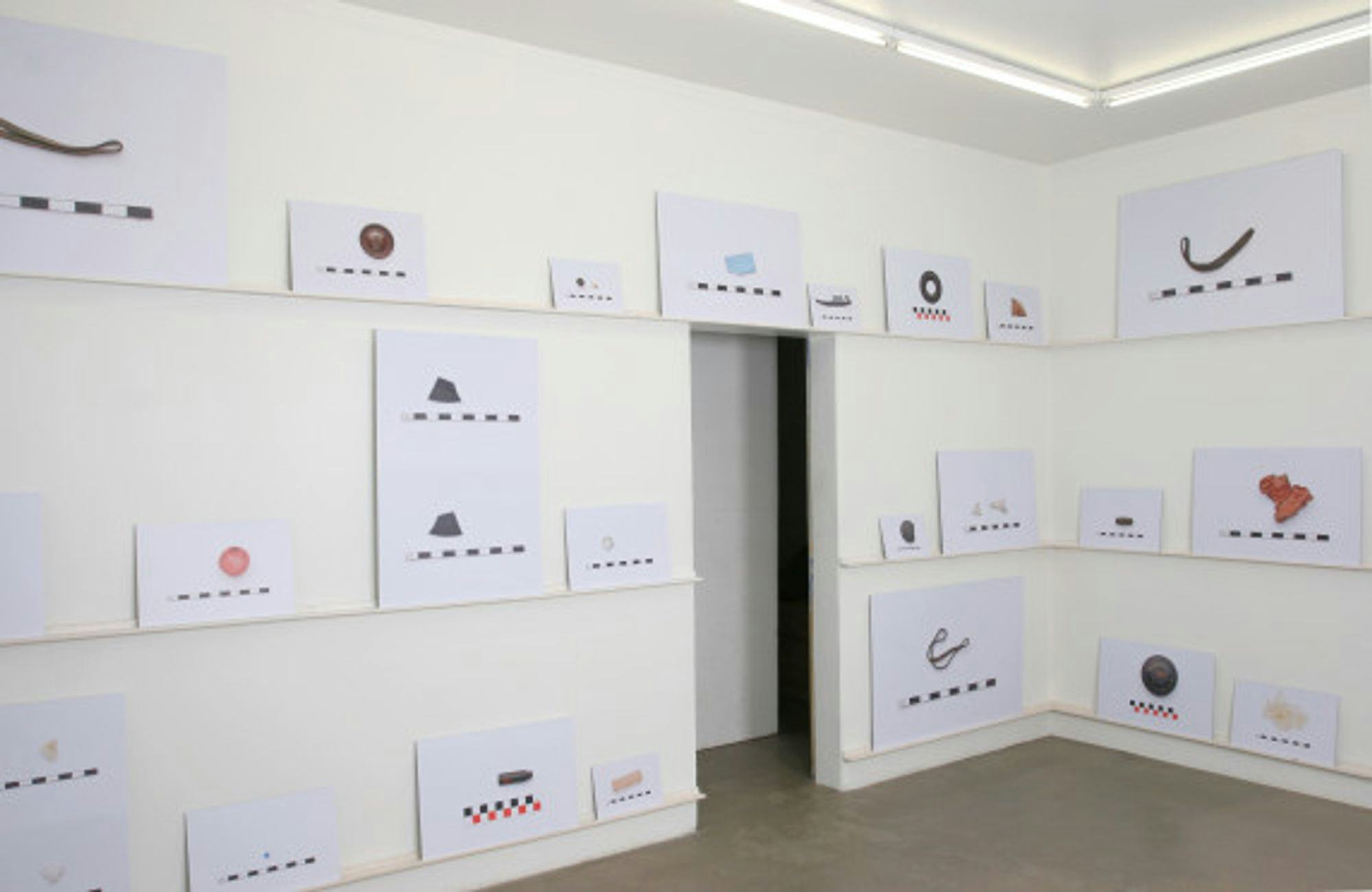
Photo by Steinunn Marta Önnudóttir at Harbinger. Artwork by Þorgerður Ólafsdóttir.
Can you tell me about what you’re doing Harbinger, the program that started on June 17th? And why you chose Harbinger for the project, or how the collaboration came about?
Hildigunnur: Often we talk about the younger people and I wanted to put together a show with them, a generation I’ve been teaching for the past ten years. The idea of a summer program therefore came to be, where openings would be frequent and people would get a chance to do something.
What are your expectations towards the project, what is it that makes you excited about doing it?
Hildigunnur: I decided to perform this in a similar manner as when I do my art, create certain work rules and create a system surrounding it. Me and Anna Hrund (Másdóttir) were once going to open a gallery by Hringbraut where we would invite one artist to exhibit and then one thing would lead to another. Each artist would point out the next. That way a journey would take place and the rule would be that no one could take down their previous work, the artists would be stuck with the ones that came before them and would need to take a stance, ethically and aesthetically towards it. And that’s how this idea of a summer show comes to be. There will be works building up all the time and more and more people coming in, three artists each week. It’s done by a certain democratic process, where artists are pointed out and then the group takes a vote on who should continue. Trust has a lot to say in the process. There aren’t any rules really, except you can’t destroy other works, but then it’s a good thing to ask yourself what it means to destroy? Is it taking something from the spot the artist put it? The work title for the project is Codependency, which I find to be a very popular and fun word. By this I also want to ask if democracy as a term is limiting or editing as a force or if it’s colourful and great.
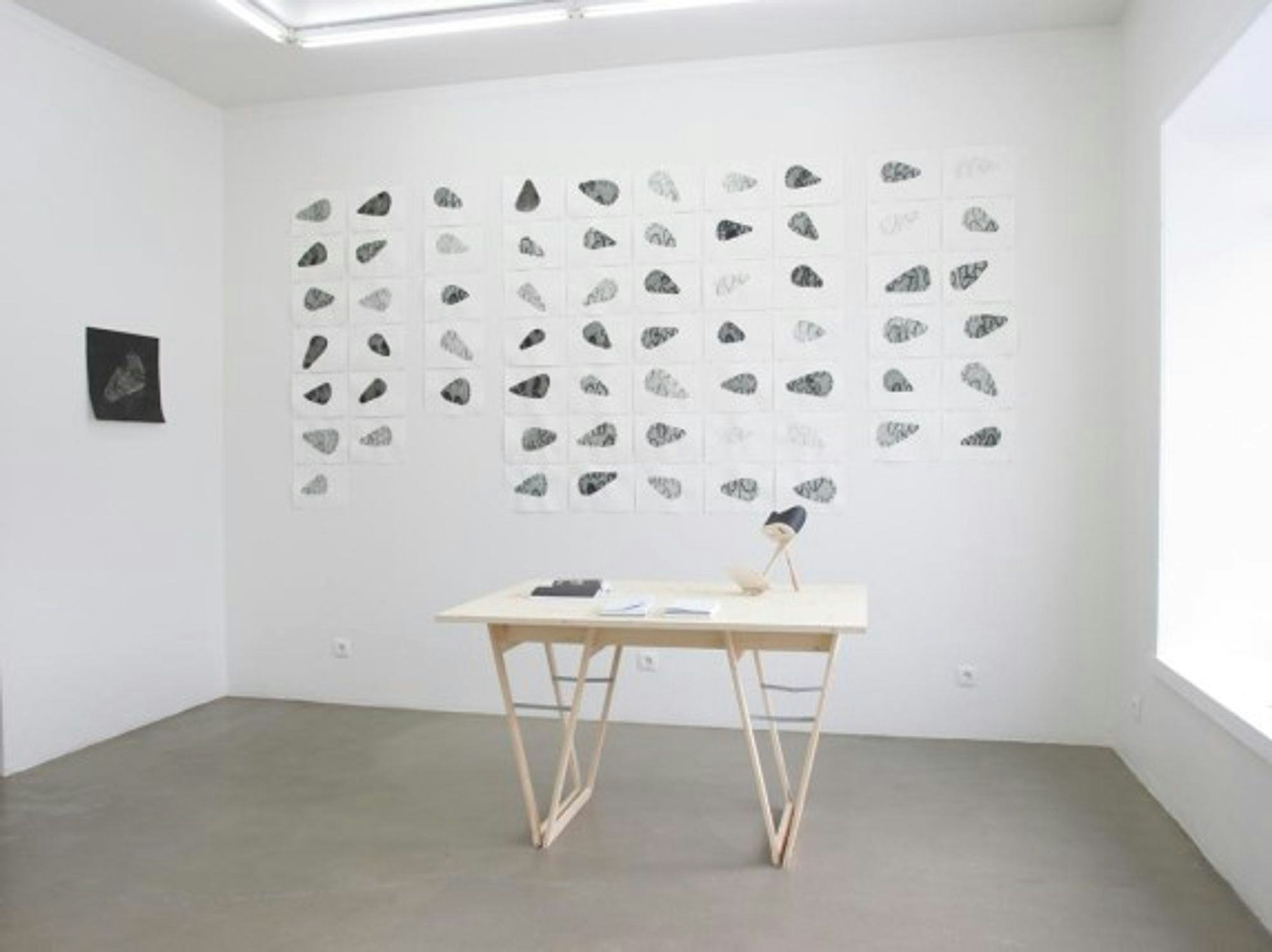
Photo by Steinunn Marta Önnudóttir at Harbinger. Artwork by Karlotta Blöndal.
I’d describe your approach towards Codependency to be rather experimental, have there been any projects, exhibitions or curators that have inspired you? Do you follow what’s happening with curators abroad or do you rather seek out your own methods in creating the exhibition environment?
Hildigunnur: I obviously consider myself as an artist and not a curator, but I like making systems and have curated a little bit like you do within artist run spaces. I don’t follow curators any more than looking into who they are when I go to exhibitions myself, especially big group exhibitions or fairs (like Documenta, the Venice Biennale etc.) and that’s how I gather my curatorial knowledge. I don’t think there’s any one way, but an example of good curating was for example to be seen with Carolyn Christov-Bakargiev at Documenta. Steinunn Marta: I remember a show at the Reykjavík Art Museum I thought was really well done, where Ingibjörg Jónsdóttir curated international artists, Ragna Róberts alongside others.
You choose to invite freshly graduated artists to take part in your project. In what ways is it different working with more experienced artists versus the ones who are just starting out in their career? What was the reason you chose to work with the latter at this time?
Hildigunnur: I’m really just choosing one person and from that a process of pointing out and voting starts to form and most of them are taking their first steps within the art world. I wanted to work with them because I really like the new generation, I think there’s a fundamental difference in the way they talk about themselves and art. Often people seem to think that all art needs to be research based and deep in order to be validated, but my opinion is that the young people are honest and true to themselves and really more professional than the ones that came before. People don’t necessarily make better work when they’re younger, but the energy is just something else.
Finally, I want to ask if you have any advice for young artists, is there anything you’ve learned from your experience working with other people and would wish someone had told you when you were starting out?
Hildigunnur: I’d advise everyone to study at home and abroad. But I also think it matters to know what you think is true. Some are always trying to be “artists” and that they’re this one way, but the ways are so incredibly many. It’s important to remember that there are no changes in life that will be any sort of ‘deal breakers’, all that matters is to streamline art and life and being true.
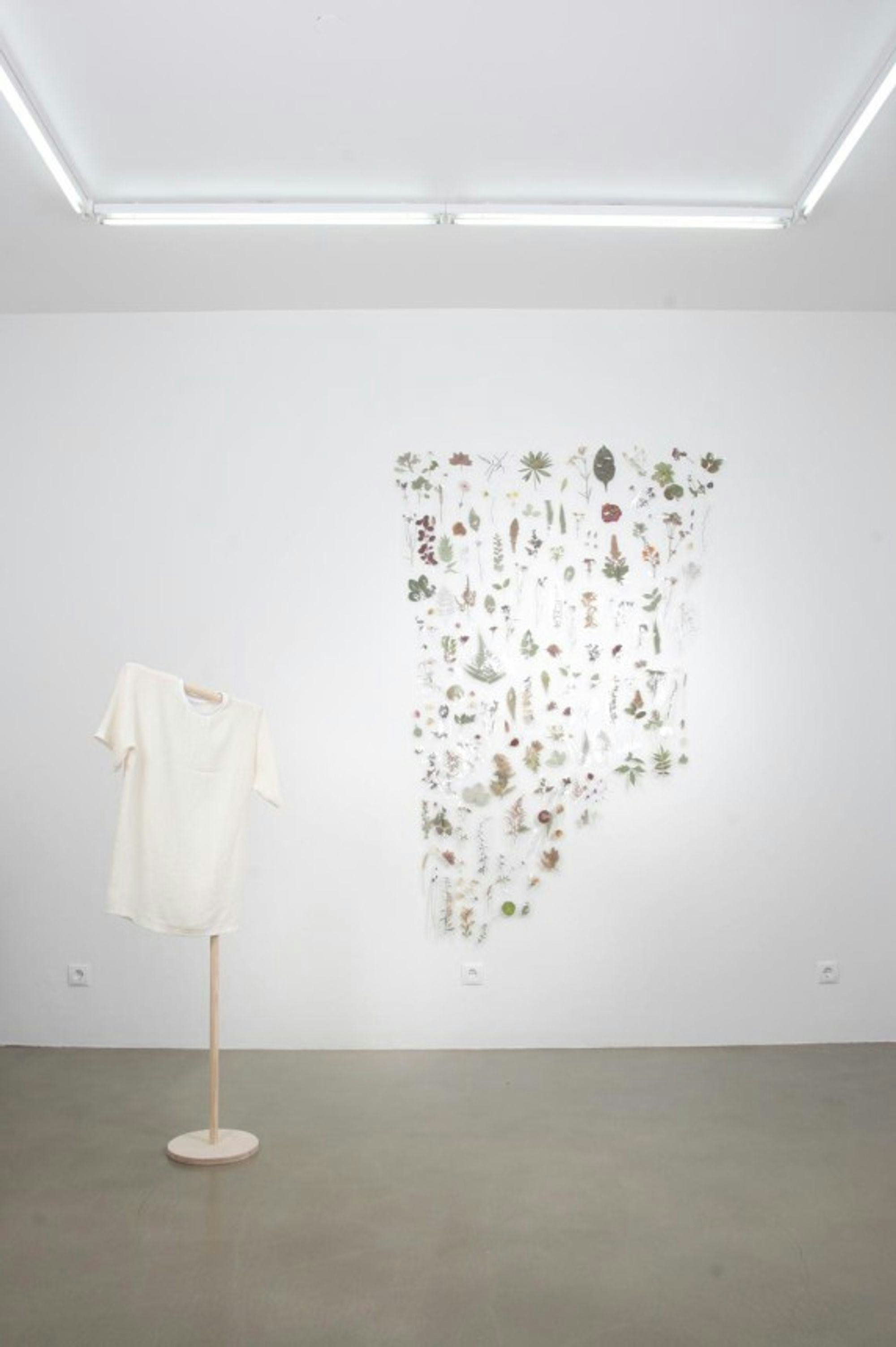
Photo by Steinunn Marta Önnudóttir at Harbinger. Artwork by Arna Óttarsdóttir.

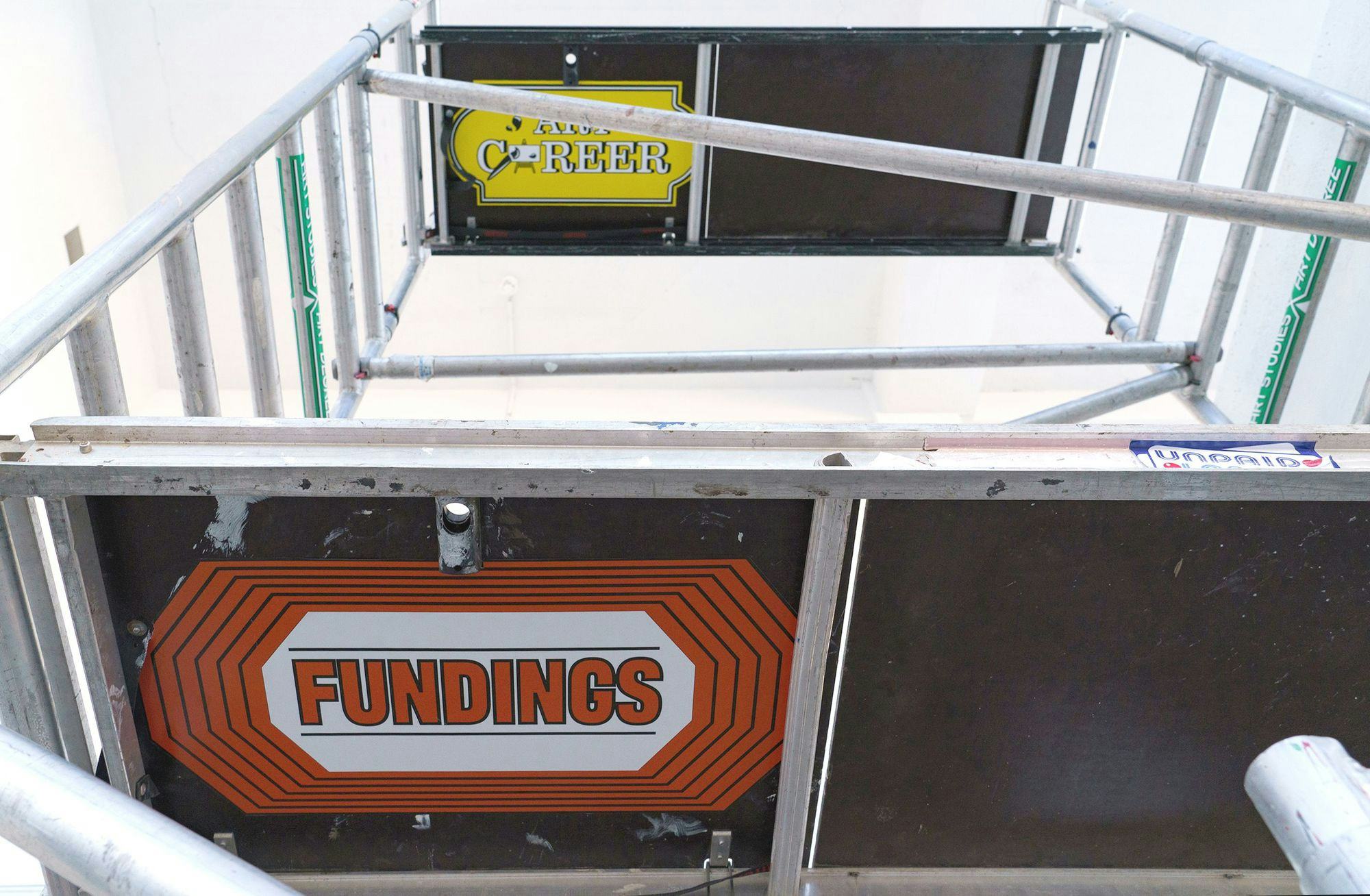
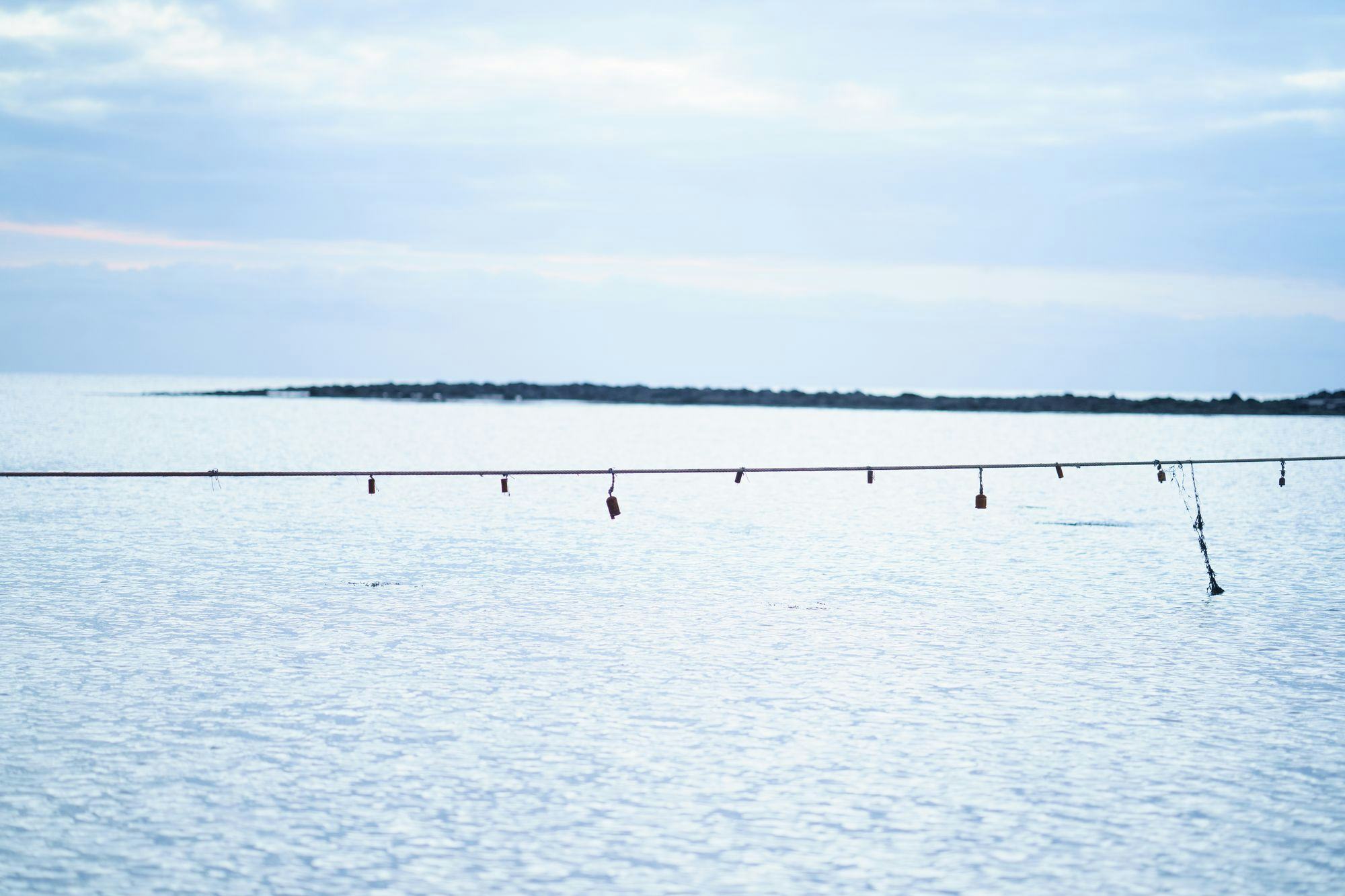
-icelandic-pavilion-2000x2667.jpg&w=2048&q=80)

